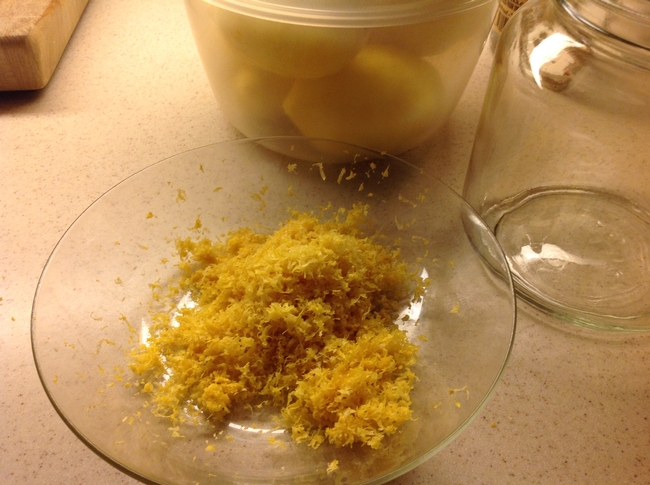It's early spring, and that means one thing: I am once again drowning in lemons. This year with our tree well established, we had a bumper crop. Even as an espalier, our tree produces more lemons than we can use. And as anyone with a lemon tree knows - it's almost impossible to give away lemons. Lemons are the zucchini of winter.
With a pantry full of marmalade, a batch of salted lemons preserving, and all of the copper gleaming, I was looking for a new way to use my harvest. A neighbor told me she distributed all of her lemons by having a lemoncello making contest with her friends. Lemoncello, the Italian lemon liqueur, is gaining popularity outside of Italy. It uses a lot of lemons and is easy to make.
The basic recipe for lemoncello is the same. Lemon zest, alcohol, simple syrup, and time. While recipes vary little, proportion and procedures are highly guarded secrets of the cognosenti.
Purists insist on using a base of grain alcohol; it imparts no flavor of its own to the lemoncello letting the lemons shine through. Where grain alcohol is unavailable, a high quality vodka can stand in. I chose a hand crafted corn based vodka, distilled 6 times, because corn seemed the closest to grain alcohol and it had a relatively high proof.
For my first try, I am halving the basic recipe. The first step was to zest the lemons. A lot of lemons.
A microplane is a must-have tool as you want pure zest with no pith.
Add the liquor to the lemon zest. Put it a cool, dark place. Wait. 45 days.
See you mid-May for the next step.
P.S. After the original mixing of the lemon zest and the vodka, and on an apéritif roll, we decided to make vin de pêche using the recipe from Chez Panisse Fruit. The large glass jar photographed above was re-purposed for the vin de pêche, and the vodka and the zest were moved into the empty vodka bottle. This is probably a better solution as there is less air surface in the container.




